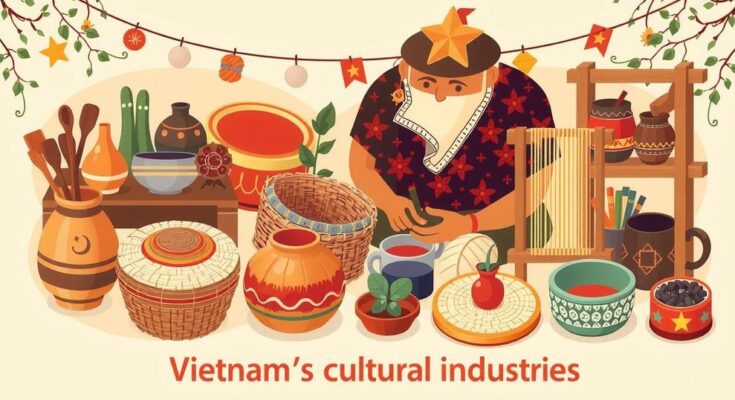Vietnam is embracing its cultural industries as vital drivers of economic growth and guardians of its rich heritage. The government’s Resolution No. 01/NQ-CP lays out strategic plans for socio-economic development, aiming to establish vibrant, modern, and creative cultural sectors by 2025 and beyond. This initiative reflects a recognition of how cultural endeavours can significantly enhance the economy while preserving unique national identities.
Local regions are tapping into their cultural wealth to create thriving industries centred around their history and art. In Ho Chi Minh City, priority is given to eight key cultural sectors, including film, which boasts over 930 enterprises and more than 9,000 jobs. This industry contributes approximately 0.43% to the city’s GRDP, showcasing the city’s ambition to establish itself as a renowned global film hub and integrate into UNESCO’s Creative Cities Network.
Further south, the Mekong Delta is capitalising on cultural tourism and handicrafts, particularly in Vinh Long, which is rich in historical locations and traditional arts. The province has dedicated over 30 billion VND to restore cultural sites and boost tourism, aiding in the local handicraft industry’s expansion into both domestic and international markets, with crafts such as pottery and basket weaving gaining momentum.
Can Tho city, another Mekong Delta gem, is also enhancing its cultural tourism offerings, boasting 640 accommodation facilities and a blend of ecological and cultural experiences. This hub aims to attract a diverse range of visitors, creating a vibrant tourism landscape that showcases the region’s diverse cultural tapestry.
Investment goes beyond mere infrastructure; it includes nurturing creativity and entrepreneurship. Ho Chi Minh’s local authorities are promoting tax incentives and startup funding, aiming for cultural industries to grow at 12% annually by 2030, making significant contributions to the city’s economy. Similarly, in Ca Mau, sustainable tourism and local crafts are central to economic strategy, with efforts to preserve and promote historical and cultural landmarks as a means to draw in visitors.
In Vinh Long, authorities are enhancing infrastructure for cultural initiatives and implementing the “contemporary heritage Mang Thit” project to support traditional craftsmanship while fostering tourism. The province is also considering incentives for artists and businesses that enrich the cultural sector, ensuring sustained growth and vibrancy in its cultural industries.
Vietnam is investing significantly in its cultural industries, as outlined in Resolution No. 01/NQ-CP. This strategy aims to develop vibrant creative sectors by 2025. Local regions, such as Ho Chi Minh City and Vinh Long, are leveraging cultural assets for economic growth, while initiatives in Can Tho and Ca Mau focus on sustainable tourism and craftsmanship. Overall, these investments aim for a 12% annual growth in cultural sectors by 2030, fostering entrepreneurship and preserving cultural heritage.
Vietnam’s increased investment in cultural industries heralds a robust strategy for economic growth intertwined with cultural preservation. The focus on cities like Ho Chi Minh and Vinh Long illustrates a commitment to developing creative sectors, enhancing local craftsmanship, and nurturing tourism. With ambitious targets set for the coming years, these initiatives promise a vibrant cultural landscape that will benefit both the economy and the rich cultural identity of the nation.
Original Source: vietnam.vnanet.vn



